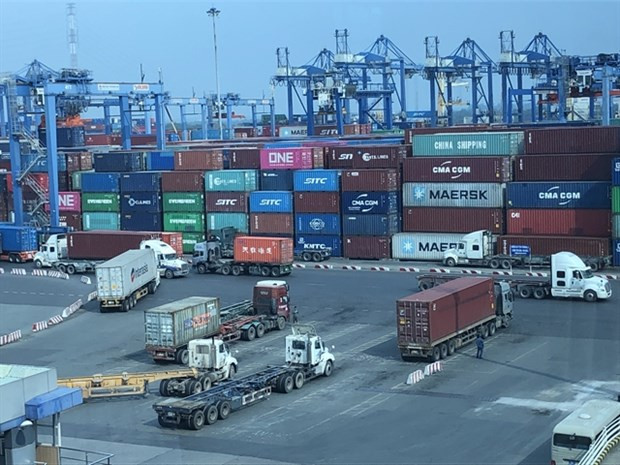
Tan Cang – Cat Lai Port in HCM City. (Photo: VNA)
After three years of disruption, international supply chains appeared to be returning to normal, it said.
The cost of shipping freight by sea or air had largely returned to pre-COVID-19 levels; container ships were no longer queuing outside major ports and businesses no longer cited “supplier delays” as one of their most pressing problems.
This did not, however, mean it was business as usual for logistics, manufacturing and other industrial sectors.
The pandemic and geopolitical tensions had exposed the fragility of supply chains and placed a new emphasis on resilience.
Meanwhile, cost continued to be key in a tough economic climate.
Cost remained a powerful lever of location decisions.
Jack Harkness, director of regional industrial and logistics services at Savills, said rising labour costs in China mean it is not as cost-effective as it once was, particularly when domestic incentives to re-shore and ongoing security concerns are factored in.
“Companies already embedded in China are not necessarily withdrawing. But there may be a slowdown in new facilities being established there.”
Harkness points out that many companies with facilities in China are looking to complement rather than replace existing plants. Apple, for example, has announced plans to diversify away from China, while Siemens has said it is looking at other locations in Southeast Asia.
“This process is being accelerated across sectors deemed strategically important to US and European industrial policy.
“Furthermore, there has been scepticism around state influence of some Chinese tech firms, which suggests the western expansion of Chinese firms will be more constrained in the future.”
According to John Campbell, associate director, head of industrial services at Savills Vietnam, Vietnam’s north and south have distinct characteristics: the former typically experiences a high demand for electronics, while it is more diverse in the latter.
In terms of nationality, there has been an increase in European companies, particularly German and French manufacturers, which demonstrates the positive impact of the EU-Vietnam Free Trade Agreement (EVFTA).
There is still strong interest from Asian manufacturers, with Taiwanese electronics companies preferring the north and manufacturers displaying confidence in the south.
After the global slowdown in the first half of the year, he said he anticipated a much better second half.
The challenges faced by the manufacturing sector, indicated by the decline in the purchasing managers index and industrial production, were now being reversed, he said.
This had improved confidence among manufacturers, investors and logistics companies, leading to a likely better performance in the second half of the year.
There would be a significant turnaround in the country’s economic performance by December, he added./. VNA